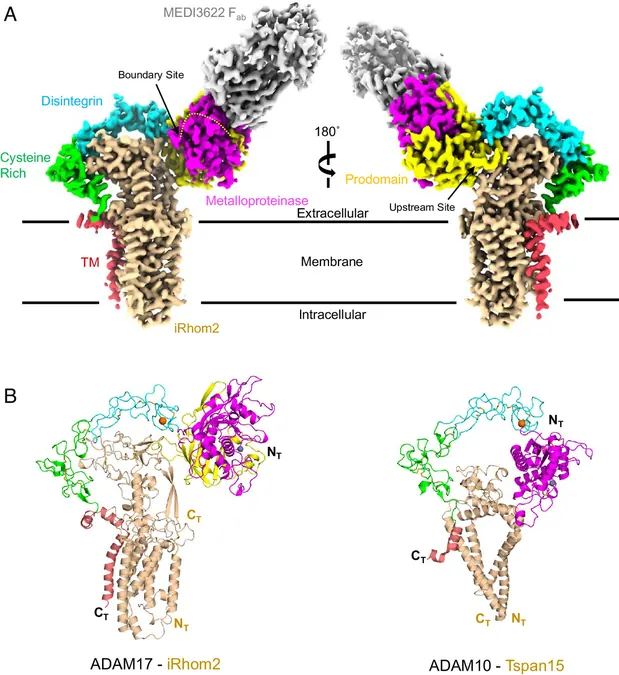
Breakthrough in Immune Research: First-Ever Visualization of Key Protein Structures!
2025-06-14
Author: Wei
Revolutionizing Immune Therapy: A Game-Changer!
In a groundbreaking discovery, scientists at the University of Cincinnati have visualized two crucial protein structures for the very first time, paving the way for the development of more effective therapies targeting immune response and inflammation.
The Pioneers Behind the Research
This landmark research, published in the prestigious Proceedings of the National Academy of Sciences (PNAS), hails from the Seegar Lab. Dr. Tom Seegar, a prominent figure in molecular biosciences, led the study along with his team members Joe Maciag and Conner Slone.
Unlocking the Secrets of Protein Interactions
Using state-of-the-art cryogenic electron microscopy, the researchers successfully visualized the ADAM17 enzyme linked to its regulatory partner, iRhom2. These insights reveal how they interact and influence inflammatory signals in the body.
Dr. Seegar emphasized the importance of visualization, noting, "If you can see something, you can figure out how it works." This shift brings new clarity to the mechanisms driving chronic inflammatory diseases such as rheumatoid arthritis, cancer, and COVID-19.
Targeting Disease with Precision
A pivotal focus of this research is understanding the signaling pathways that ADAM17 communicates with other proteins involved in immune defense and tissue repair. "In conditions like cancer, excessive signaling poses risks, often leading to side effects worse than the disease itself," Maciag pointed out.
The team is working on how to selectively target iRhom2 to minimize these effects, identifying a unique structure known as the "re-entry loop" that is vital for ADAM17's function.
Transformative New Facility Fuels Research
This research marks a significant milestone for UC's Center for Advanced Structural Biology, established just last year. With cutting-edge equipment, including a transmission electron microscope perfectly suited for complex protein analysis, the facility is a cornerstone for future discoveries.
"Having this technology on campus is a privilege, and it’s exciting to utilize it for structural analysis that has immense implications for cellular biology and the understanding of diseases," Maciag remarked.
What's Next? A Deeper Dive into Protein Dynamics
As the Seegar Lab moves forward, they plan to focus intently on the iRhom2 protein, aiming to unlock further mysteries and harness this knowledge for targeted therapeutic strategies.
"Understanding these adapter proteins could allow us to gain control over various disease states," Slone stated.
The journey ahead promises to advance our understanding of inflammatory conditions and revolutionize how we approach their treatment.
Join the Revolution in Health Science!
This groundbreaking research exemplifies the powerful intersection of technology and biology, bringing hope for innovative treatment options that could change countless lives.



 Brasil (PT)
Brasil (PT)
 Canada (EN)
Canada (EN)
 Chile (ES)
Chile (ES)
 Česko (CS)
Česko (CS)
 대한민국 (KO)
대한민국 (KO)
 España (ES)
España (ES)
 France (FR)
France (FR)
 Hong Kong (EN)
Hong Kong (EN)
 Italia (IT)
Italia (IT)
 日本 (JA)
日本 (JA)
 Magyarország (HU)
Magyarország (HU)
 Norge (NO)
Norge (NO)
 Polska (PL)
Polska (PL)
 Schweiz (DE)
Schweiz (DE)
 Singapore (EN)
Singapore (EN)
 Sverige (SV)
Sverige (SV)
 Suomi (FI)
Suomi (FI)
 Türkiye (TR)
Türkiye (TR)
 الإمارات العربية المتحدة (AR)
الإمارات العربية المتحدة (AR)